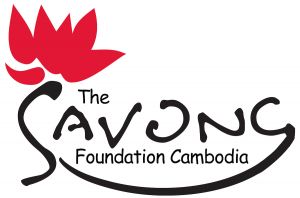How much is a CEO worth?
How much do you think I made as the CEO of the Savong Foundation last year?
You would be correct if you came up with the exact number of -$5168.36. Yes, that’s right, it’s a minus because I earned $0 but with personal donations, advertising, travel expenses and other miscellaneous costs, I’m in the hole for over $5000 for 2015. I certainly don’t regret spending the money; I like to direct as much money towards our student programs as possible and I realize there are personal costs associated with running a nonprofit.
At the Savong Foundation, very little money is spent on administrative expenses. In fact, last year, over 98% of our income was put towards program expenses. We were able to achieve this number because none of our board members get a salary and we only had two paid staff members, our scholarship manager and our computer teacher. We don’t have an office and we don’t have team building getaways in expensive hotels.
98% is an impressive number and I’m very proud of what we have achieved with our public and corporate donations. However, does that mean we are “better” than those nonprofits who have a lower percentage, meaning that more of their donations went towards administrative expenses than program expenses?
Nonprofit evaluation websites such as Charity Navigator would have you believe that.
But the answer isn’t quite so clear.
I believe that nonprofits have as much right to hire skilled and qualified staff as a profit organization if they want to be a successful corporation. And here is the key: Skilled and qualified staff demand high salaries. And why shouldn’t they? They are hopefully the top people in their field! Why should nonprofits have to settle for second or third best just to keep their administrative expenses low so that they rank higher among nonprofits?
Of course, there is a limit. A small organization shouldn’t be paying their CEO a ridiculously disproportionate salary. And large organizations shouldn’t have ridiculously low program expenses percentages either. But even if they do, I still don’t think these percentages are necessarily a good measure of the work that a nonprofit is doing.
It’s much more important to look at IMPACT. In other words, how effective is the nonprofit in achieving its stated goals for each dollar spent? And nonprofits have to be compared to similar nonprofits. I think it’s crazy to try to compare a veteran’s organization with an animal welfare organization because they have entirely different goals and expenses. You know what they say about apples and oranges.
Every donor wants to know that their money is being well spent … and the Savong Foundation is fortunate that we can keep our overhead costs to a minimum. However, I still think we should evaluate nonprofits in a different way by focusing on what truly matters.
administration, Cambodia, CEO, compensation, Foundation, funding, grants, impact, money, neuter, nonprofit, proposal, salary, Savong, scholarships, Siem Reap, students, welfare

